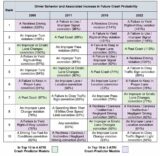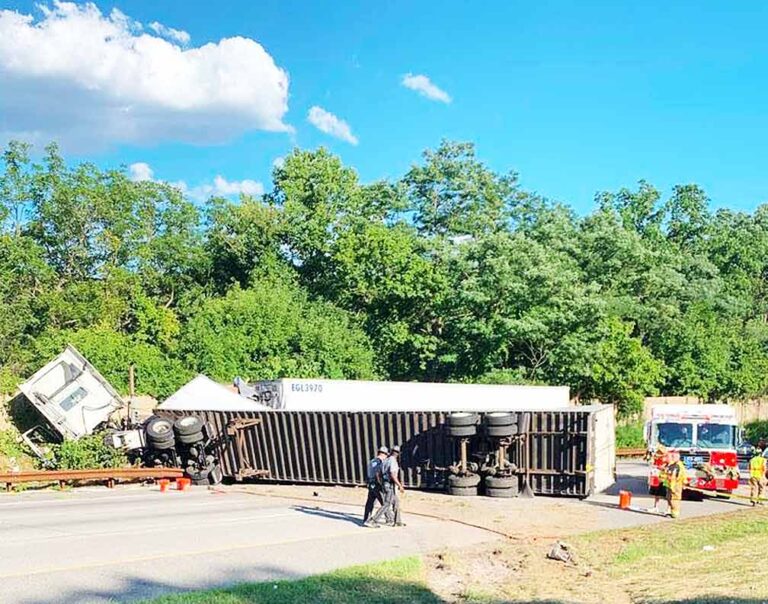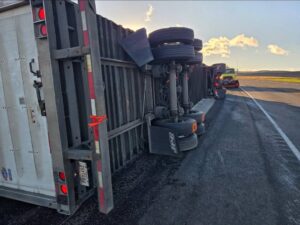ATLANTA — Based on new analyses conducted by the American Transport Research Institute (ATRI) in its 2022 Crash Predictor update, states with lower percentages of traffic enforcement inspections saw increases in big truck crashes.
In 2020, 4,965 people died in big rig crashes, according to the National Safety Council.
That number decreased just 1% from 2019 but is still up 31% since 2011. A majority of deaths in large truck crashes are occupants of other vehicles (71%), followed by truck occupants (17%) and non-occupants, primarily pedestrians and bicyclists (12%).
The Crash Predictor report noted that “to combat the rise in crashes, it would be advantageous for states to increase traffic enforcement inspections. Traffic enforcement inspections tend to be about 3.1 times more effective from a safety standpoint than roadside vehicle inspections.”

In Connecticut, the number of big truck crashes increased more than 135% between 2018 and 2022 as the state’s rate of traffic enforcement inspections declined by more than 11% during that same time, according to ATRI.
The state with the greatest increase in the number of traffic enforcement inspections — North Dakota — saw a 30% decline in crashes after increasing inspections by more than 167%.
The report also includes an updated list of the 10 Top Tier States for truck safety, ranked by the relationship between traffic enforcement inspections and crashes. Washington State was the top-ranked state, followed by Indiana, New Mexico, Arizona and Massachusetts.
“Having a science-based model for predicting crashes is one of the most important tools the trucking industry can have,” American Trucking Associations Vice President of Safety Policy Dan Horvath said. “ATRI’s Crash Predictor research allows carriers to target and monitor those truck driver behaviors that matter most. With truck crashes increasing, there is no better time to have this data in our hands.”
GENDER STUDY
Male truck drivers continue to be more likely than females to have violations, convictions and crash involvement for all statistically significant events, according to the ATRI study.
The study points out, however, that females represented just 6.7% of the truck driver workforce in 2019 (the year of inspection data collection), according to the Bureau of Labor Statistics (BLS),
Additionally, females represented just 2.7% of the 2019 driver inspection data being used for this year’s analysis, according to ATRI.
The 2018 gender-related findings derived from a data sample of 439,225 unique truck driver records, of which 10,741, or 2.5%, were women.
According to BLS, there were 3.5 million truck drivers in 2015, of which 5.1%, or approximately 176,900, were estimated to be women.
From 2018 to 2022, males continued to be significantly more likely than females to commit 11 behaviors predictive of future crash involvement, according to ATRI.
Of these behaviors, three experienced an increased likelihood larger than in 2018. These three behaviors include a medical certificate violation (up 49.2% from 2018), failure to obey traffic sign conviction (up 50% from 2018) and failure to obey traffic control device violation (up 26.1% from 2018).
CRASH PREDICTORS
A conviction for failure to obey warning lights/flasher generated a 243% increase in future crash probability, according to ATRI. The study notes, however, that just 23 truck drivers received this conviction during the study period.
Failure to yield right-of-way violation, failure to use/improper signal conviction and reckless driving violation were all strong indicators of future crash likelihood as all increase crash likelihood by more than 100%.
Simply having a prior crash on a truck driver’s record increased the probability of a future crash by 113% — that’s 28.4% higher than any previous Crash Predictor report.

An improper or erratic lane changes conviction and past crash have been among the top 10 predictors of future crashes in all four crash
predictor reports.
The top five most stable predictors of future crashes across all four reports, according to their median increased likelihood of a future crash, were: Reckless driving violation (114%); failure to use/improper signal conviction (89%); a past crash (88%); failure to yield right-of-way
violation (85%); and improper or erratic lane changes conviction (79%).
ATRI’s Crash Predictor research, originally published in 2005 with updates in 2011 and 2018, designed and tested a predictive model that identified statistically significant relationships between truck driver safety behaviors and future crash probability. The new 2022 report uses the same statistical methods and is based on more than 580,000 individual truck driver records.
For this study, ATRI used driver-specific data from the Motor Carrier Management Information System and the Commercial Driver’s License Information System. Drivers receiving inspections during the three months of January through March 2019 comprise the 2022 driver database.
A total of 583,805 unique U.S.-based truck drivers were identified. The drivers were involved in 38,797 crashes that were reported to Federal Motor Carrier Safety Administration. Towaways accounted for 65.6% of the crashes, and only 5.8% of drivers — 34,117 — were involved in a crash during the study period.
A full copy of the report is available through ATRI’s website here
The Trucker News Staff produces engaging content for not only TheTrucker.com, but also The Trucker Newspaper, which has been serving the trucking industry for more than 30 years. With a focus on drivers, the Trucker News Staff aims to provide relevant, objective content pertaining to the trucking segment of the transportation industry. The Trucker News Staff is based in Little Rock, Arkansas.
















So basically with more truck enforcement inspections stations, based in your study,
it will reduce the amount of accidents within the trucking industry.
Not a single word about the hiring process. unexperience drivers. two weeks school’s and most important issue, that clock in your dashboard that you are trying to beat all the time called ELD.
You people are amazing
goverment is something else!! the problem is inexperience drivers who get in a truck in 2 weeks or less , ELD, which makes u hurry to everything done ! tell u when to sleep when your not ready, i dont need a computer to tell me when im tired!! its the goverment putting to much regulation on something they no nothing about!! its only going to get worse day by day! just wait to electric trucks run the road ,we will really be in trouble! gov regs have really messed up trucking is all i can say!!•